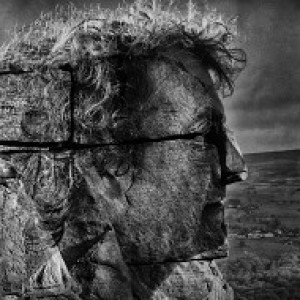Victorian Graffiti
Vandalism writ large
It's not been the greatest day weather-wise, but it could have been a lot worse. I saw the seconds claim a thrilling winning draw against the league leaders Ilkley (a local derby game) and the firsts were also happy to share a point each in their own top of the table clash. I got a fair bit of work done while I waited for the heavy showers to clear away through lunchtime and took a run on the moor this evening, combining some training with some photography.
I'm posting this shot mainly to illustrate the power of the internet. I didn't notice it at the time, but when I looked at this picture I saw that a certain E.M.Lancaster had inscribed his name twice on the rocks. Within seconds of googling the name I was staring at a photograph of this gentleman. Click here to see this overlaid on a clearer view of the engraving he clearly spent considerable time making. He apparently lived at the top of our road here in Ilkley, no more than 200 yards away. He will certainly have walked past our house here many times. If you could zoom in enough you would be able to see both houses in the background of this shot!
It's easy to take this kind of thing for granted now, but it's really quite amazing. Just as my curiosity had been piqued tonight, so naturally enough had others before me, and their research is there to be read. Click here if you are interested. The internet doesn't just connect us so closely in the present time but also allows us to make astonishing connections through history.
It also raises the question of whether this should be regarded as art or vandalism. There is a very long tradition of making marks in these rocks, going right back to the cups and rings of the Bronze Age, as illustrated in an earlier blip of the Badger Stone. If someone was to create an engraving now it would no doubt be classified as the most appalling vandalism, but why should that be the case now if we look upon such creations from the past as art? We have a tendency to want to seal our current version of the landscape as somehow definitive, forgetting that what we most love is almost entirely the product of past intervention. Yesterday's Dales Way landscape is almost entirely man-made, from the cleared fields, to the stone walls and right up to the plantation in the distance. It's not a natural landscape at all. But possibly all the more beautiful for being the work of many human hands over many hundreds of years!

Comments
Sign in or get an account to comment.


